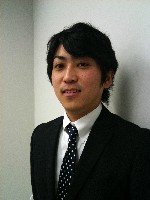| 2003.3 | Graduated from Department of Environmental Urban Engineering, Fukui National College of Technology, Japan. |
| 2003.4 | Transfer admission to Department of Civil Engineering, School of Engineering, Gifu University, Japan. |
| 2005.3 | Graduated from above. |
| 2005.4 | Entered master's program of Department of Civil Engineering, School of Engineering, Gifu University, Japan. |
| 2007.3 | Completed above program. |
| 2007.4 | Entered doctoral program of Built Environment, Graduate School of Engineering, Hokkaido University, Japan. |
| 2009.4 | Research Fellow, Japan Society for the Promotion of Science (DC2). |
| 2010.3 | Completed doctoral program of Built Environment, Graduate School of Engineering, Hokkaido University, Japan. |
| 2010.4 | Research Fellow, Japan Society for the Promotion of Science (PD). |
| 2011.1- | Assistant Professor, Division of Environmental Engineering, Faculty of Engineering, Hokkaido University, Japan. |

